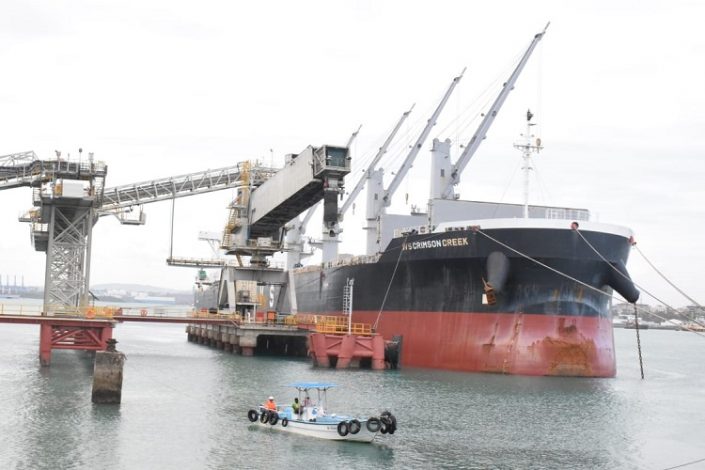The logistics industry in Kenya will continue to expand exponentially from ‘godowns’, to higher quality A- and B-grade warehouses according to Broll Property Intel and Knight Frank reports. Developments in the manufacturing industry, transport and storage, wholesale and retail, and establishment of Special Economic Zones (SEZs) will drive demand for logistics services.
“The Kenyan logistics sector is directly impacted by the performance of all sectors of the economy and in particular the industrial sector, which includes the import and export of goods (warehousing),” said Vivian Ombwayo, Broll Kenya’s Head of Research and Valuations, during the launch of the Kenya Logistics Market Snapshot Q4:2018 report at the sidelines of 6th East Africa Property Investment (EAPI)Summit.
“Digging down into the detail of the report, our research shows that there was an increased supply pipeline of A-grade warehouses mainly in Nairobi’s peripheral areas. However, the stock of lower specification warehouses termed “godowns” largely supplied in the main industrial area, showed a decline. This points to the changing face of the Nairobi market, which is now increasingly able to satisfy the demand for quality stock,” she added.
Nairobi experienced a 15% year-on-year increase in new warehousing supply according to Broll Insights. Transport and Logistics users occupy the highest market share of approximately 26%, followed by manufacturing and engineering; and, wholesale, at 23% and 22% respectively.
On the other hand, Knight Frank report dubbed Africa Horizons, that provides a unique guide to real estate investment opportunities on the continent, notes that “Kenya is the logistics hub of East Africa and significant new investments, including the rail link between Nairobi and Mombasa, are set to cement its position.”
As a result, “This continued expansion of international and Kenyan companies is expected to generate demand for increasingly sophisticated logistics properties, particularly around Nairobi. But this will be accompanied by a continued shift in activity from the existing industrial area to emerging hubs such as the Northlands Ruiru areas.”
In Nairobi, yields in 2018 stood at 8% for office, 8.5% for logistics property, and 9% for retail. A-grade warehousing around the capital currently commands monthly rents in the upward of US$6 per square metre, almost double that of the predominant stock of older units that lack modern features such as cross-docking and intermodal facilities.
Ben Woodhams, Knight Frank Kenya Managing Director, said: “Yields in each of the market segments align to their risk profiles, with retail being much riskier in Nairobi currently hence the proportionately higher yield.”
Nairobi’s supply of warehouses as at Q4:2018 stood at an estimated 1.2million square metres, registering a 15% growth from close to 1.1 million square metres as at Q4:2017. B-grade warehouses account for the highest market share of approximately 920,000m², followed by C-grade at 241,000m² and A-grade warehouses at 61,000m². – Broll Kenya Research.
READ:
- What is Driving the Change in Logistics and Warehousing in Kenya
- Tilisi Completes Phase 1 infrastructure for its Logistics Park
- Enhancing Kenya Manufacturing Sector’s Competitive Edge
Tatu City has been singled out by Knight Frank as hosting the most significant logistics and light manufacturing developments with the 457-acre Tatu Industrial Park attracting investors such as Unilever, Kimfay, Dormans, Chandaria Industries and Africa Logistics Properties (ALP), which is funded partly by the Commonwealth Development Corporation and the International Finance Corporation.
September 2018, Africa Logistics Properties (ALP) launched its 49,000 sq m Grade A warehousing park ALP North in Tatu City.
Improvon Group and private equity fund Actis, via a partnership, announced the launch of a 204,386 sq m warehousing development estimated to cost Ksh11 billion. Nairobi Gate Industrial Park will sit on 103 acres and is located off the Eastern bypass.
Nairobi’s improved logistics facilities and infrastructure, combined with it improved links with the port of Mombasa, will open up further opportunities in the wider the Great Lakes region, which includes landlocked countries such as Uganda, Rwanda and South Sudan.
“Continued growth in Kenya’s logistics sector is envisioned for the foreseeable future. The expansion of A-grade warehousing is anticipated to grow as the confidence of regional and international operators increases due to improved business conditions such as tax rebates offered in SEZ and increased port throughput expected from the completion of the Nairobi-Nakuru SGR mid-2019,” says Vivian Ombwayo.




